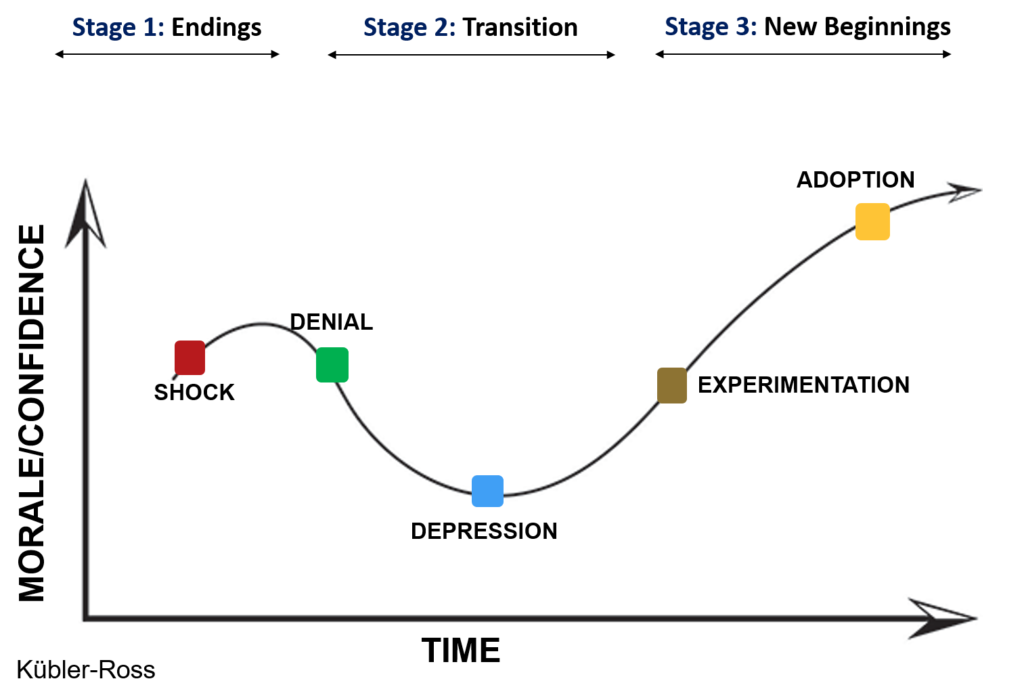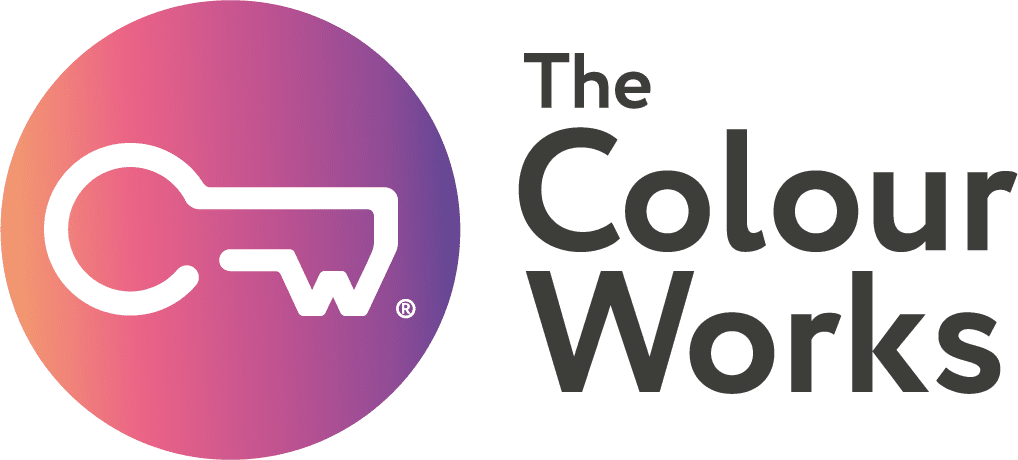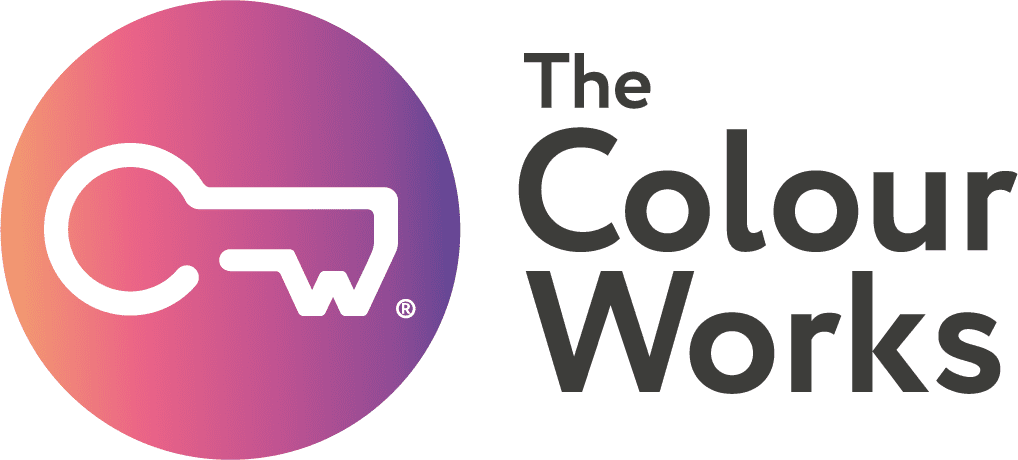“The Only Constant in Life Is Change”
– Heraclitus.
So, if change is the only constant in life, how is it possible that we can struggle so much with it?
The truth is that we mere humans aren’t designed for change, we’re designed for the familiar and stable – it’s how our brains are wired. In life, we search for patterns and create connections to make sense of the complicated world we live in. Whilst doing so, working away in the background is a 3lb(ish) mass of squidgy matter that is the hardest working, most advanced piece of technology known to humankind – that’s right, even AI can’t do what our brains can.
This complex mass of neural pathways is constantly ‘live-wiring’ using electrical and chemical pulses through tiny little processing chips called neurons. These connections create meaning and memory, and project the illusion we call consciousness that becomes our reality (more on that another time). It is estimated that within your brain there are something in the region of 87 billion of these little neurons all working away. It is also known that each neuron will have around 7,000 connections to other neurons – eat your heart out LinkedIn! That’s a massive social network, all collaborating to make us function and be who we are.
However, this efficient piece of technology is always compounding patterns, routines, and habits for us to latch onto in the moment, which is why change can be so challenging…. especially if it’s change that’s forced upon us. The sheer notion of change is that we’re losing something and heading towards something new which can be daunting… even if it should be exciting.
This psychological and emotional process that we go through couldn’t be better described than by the work of Elisabeth Kubler-Ross and The Change Curve.
Elisabeth Kubler-Ross dedicated most of her adult life to studying people with terminal illness. Her interest in this was sparked when teaching at the University of Colorado Medical School. When teaching students, Kubler-Ross took exception to the fact that there was no support, information, or training for those helping the terminally ill come to terms with their diagnosis.
Based on over 10 years of research, in 1969 Kubler-Ross published her first book outlining the five stages experienced by those with terminal illness. Her work was soon adopted by business leaders and change consultants in the ‘70s to help organisations understand the process their people would go through when faced with organisational change.
Although incomparable to the work of Kubler-Ross, being informed you’re moving back into office working, or that on Monday you’ll be sitting on the 3rd floor, or even that the cafeteria has changed their usual brand of coffee (even small changes can be impactful), the change curve, or inverted bell curve can provide a sound understanding of how we can best manage ourselves and our teams through change.
To bring this process to life let’s take a recent change that lots of us are about to experience. No, not going into lockdown – coming out of it, and getting back into the office!
The change curve follows five stages, Shock, Denial, Depression, Experimentation, and Adoption mapped over an axis of morale and confidence over time.

Shock
This can happen when the news lands on our desk that it’s time to return to the office, or perhaps when we physically get back into the office. Or it could be when we have mentally prepared ourselves for the return, and we discover it’s suddenly been delayed by another 4 weeks!
At any rate, if we’ve settled into a comfortable home working pattern, or have anxieties about the lingering potential risk of socialising, a form of shock can kick in.
During this stage, some people can also experience a temporary state of excitement. The change in environment and being back around colleagues has been long awaited, but social distancing rules, yellow tape on the carpet and a company-wide ban on the communal kitchen can all be too much. Presented with something so different to the familiar, we may find ourselves stopped in our tracks. During this stage our brains light up, existing pathways are interrupted, and electrical chemicals start firing all over the place in an attempt to adjust to the news.
The impact of this stage on our brains is significant. This is when an established pattern gets interrupted and we feel a sense of being lost. Or, if change is your bag, or the change perceived as good, we can experience a flurry of excitement. Either way, this stage is typically short but can be revisited multiple times until we move towards the end of the curve.
Denial
Denial is when we refuse to accept what’s happening. This could be because we’re nervous about the potential of being around others, or after all working from home wasn’t that bad because it offered less distraction, private facilities and more time with loved ones. Within this stage you can also experience anger and blame, angry with yourself for not embracing the new ways, or angry with others for not being more accommodating or for forcing the change.
Depression
Although the most challenging stage of the curve, moving from denial, anger and blame is a good thing, mainly because we’re on the move. However, from denial comes a stage where we might experience a state of depression. This is when we see the change to be true. We’re maybe tired of fighting but can’t see the future. We might start using statements like ‘I can’t see how this will work’, or ‘I’m not sure I can cope with another day of this’. This is a challenging stage, whether it’s the change in working patterns and location, a change in coffee provider, or something more serious like loss, this stage is sticky and is often referred to as ‘the pit of despair’. This stage is particularly challenging because when we’re here we can’t see the light at the end of the tunnel or find the first step of the ladder to climb out.
Experimentation
At some point during the previous stage, we might observe someone doing something different. It might just be a positive influence, a kind voice, or seeing an advantage in the new ways of working. But at that point and however small it might be, we experiment. We dip our toes in the water. We move forward.
Adoption
So, time has passed, and we’ve tried out a few ways of doing things differently. Adoption is when we accept change. We have established new ways of working, interacting, and behaving. Some will already be there, some will take more time. But ultimately things should be better than when we started, hence the end of the curve ending up higher than where it started on the morale and performance axis.
If we accept that Heraclitus is right and change is the only constant, the above paints an interesting picture of the process we go through each time change is imposed upon us. As change can be commonplace at work, we frequently use the change curve to help teams and leaders appreciate and understand their journey through change. The curve helps us to identify where we might be on the curve at any given point during a change initiative, and can go some way to explaining why certain behaviours might emerge. The change curve is also a great way to open a conversation with others so you can help them move from shock to experimentation, flattening the curve as much as possible.
To facilitate a smooth pathway through change, we work with individuals and teams to create a change-ready mindset. This is an approach that allows people to create agility in thought, behaviours, and attitudes. A change-ready mindset starts with our self-awareness, identifying habits, behaviours, and patterns, and noticing our reactions in a non-judgemental way.
To create this mindset, we need to start breaking down some of the established neural pathways we’ve been creating over time.
So here are four steps that you can practice to get your brain fit and ready for change:
1. Challenge your internal dialogue and reframe daily
Listen to your thoughts and consciously pay attention to what’s being said. Know that this isn’t necessarily the truth, it’s just what you are assuming. Flip any negative thoughts of ‘I can’t’, or ‘that won’t work’ to positive thoughts and help yourself see the benefits, even if something is unfamiliar to you.
2. Change habits to change your brain
As the brain is constantly either rewiring or compounding pathways, keep it occupied and take control of the rewiring. Choose three daily habits and do something different. This could be from changing your brand of coffee, the wrist you wear your watch on, how, or where you brush your teeth, to the route you take to work. Simply by changing these routines you are exercising your brain and keeping it healthy and ready for change.
3. Get colourful
If you’re familiar with the colour model, then be aware of your lead energy’s reaction to change. Appreciate that you might react in a particular way, and become familiar with what you might need throughout the change. If you aren’t aware of the colour model, take a look at this blog.
4. Learn, and put yourself in new situations
This is similar to step 2. However, here we are advancing our knowledge, experience and understanding, which builds confidence and courage. When doing this it’s important to celebrate successes, go back over what you’ve done, look at pictures, blogs, artefacts you’ve bought. This once again compounds the experience, making it a hardwired memory for you to call on in the future.
If you’re ready to build agility and kit yourself out with a change-ready mindset, give these four steps a go. If you adopt small changes now, the bigger ones might not seem so hard to handle.







